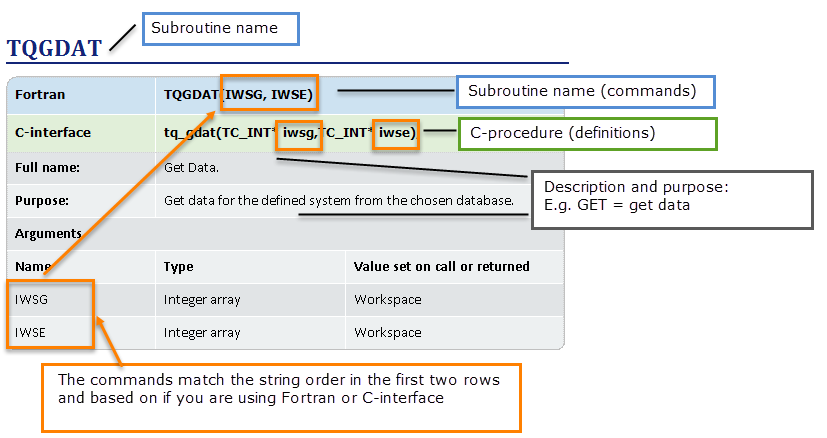TQGVER
| Fortran |
TQGVER(VERS, LNKDAT, OSNAME, BUILD, CMPLER) |
|
|---|---|---|
| C-interface |
void tq_gver(TC_STRING version,TC_STRING_LENGTH strlen_version,TC_STRING lnkdat,TC_STRING_LENGTH strlen_lnkdat,TC_STRING osname,TC_STRING_LENGTH strlen_osname,TC_STRING build,TC_STRING_LENGTH strlen_build,TC_STRING cmpler,TC_STRING_LENGTH strlen_cmpler); |
|
|
Full name: |
Get version. |
|
|
Purpose: |
The application program gets information about the TQ-library. |
|
|
Arguments |
||
|
Name |
Type |
Value set on call or returned |
|
VERS |
Character*32 |
Returns the version of TQ-library. |
|
LNKDAT |
Character*32 |
Returns the date and time the TQ-library was built. |
|
OSNAME |
Character*32 |
Returns the name of operating system the TQ-library was built for. |
|
BUILD |
Character*32 |
Returns the software revision version of the TQ-library. |
|
CMPLER |
Character*72 |
Returns the name and version of the compiler with which the TQ-library was built. |
Note the following conventions to distinguish between the programming languages.
- Routines starting with TQXXX, for example, TQGDAT, are in the Fortran interface
- Routines starting with tq_xxxx, for example tq_gdat, are in the C-interface.
- In Fortran, all routines are subroutines and do not return any values except where explicitly declared as functions.
- All the C procedures are declared as void and do not return any values except where explicitly otherwise declared.
An example of how to read the subroutine definitions.
